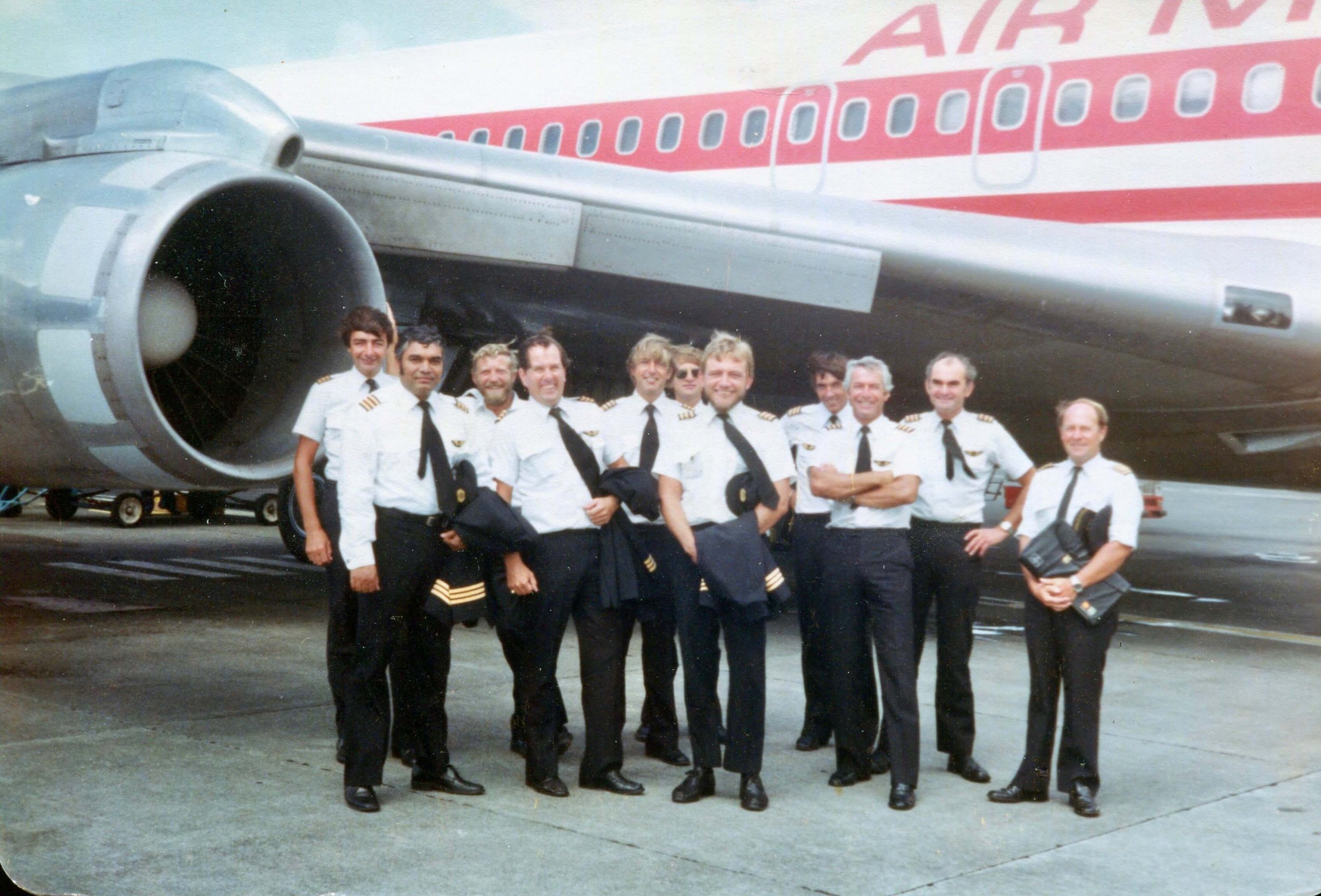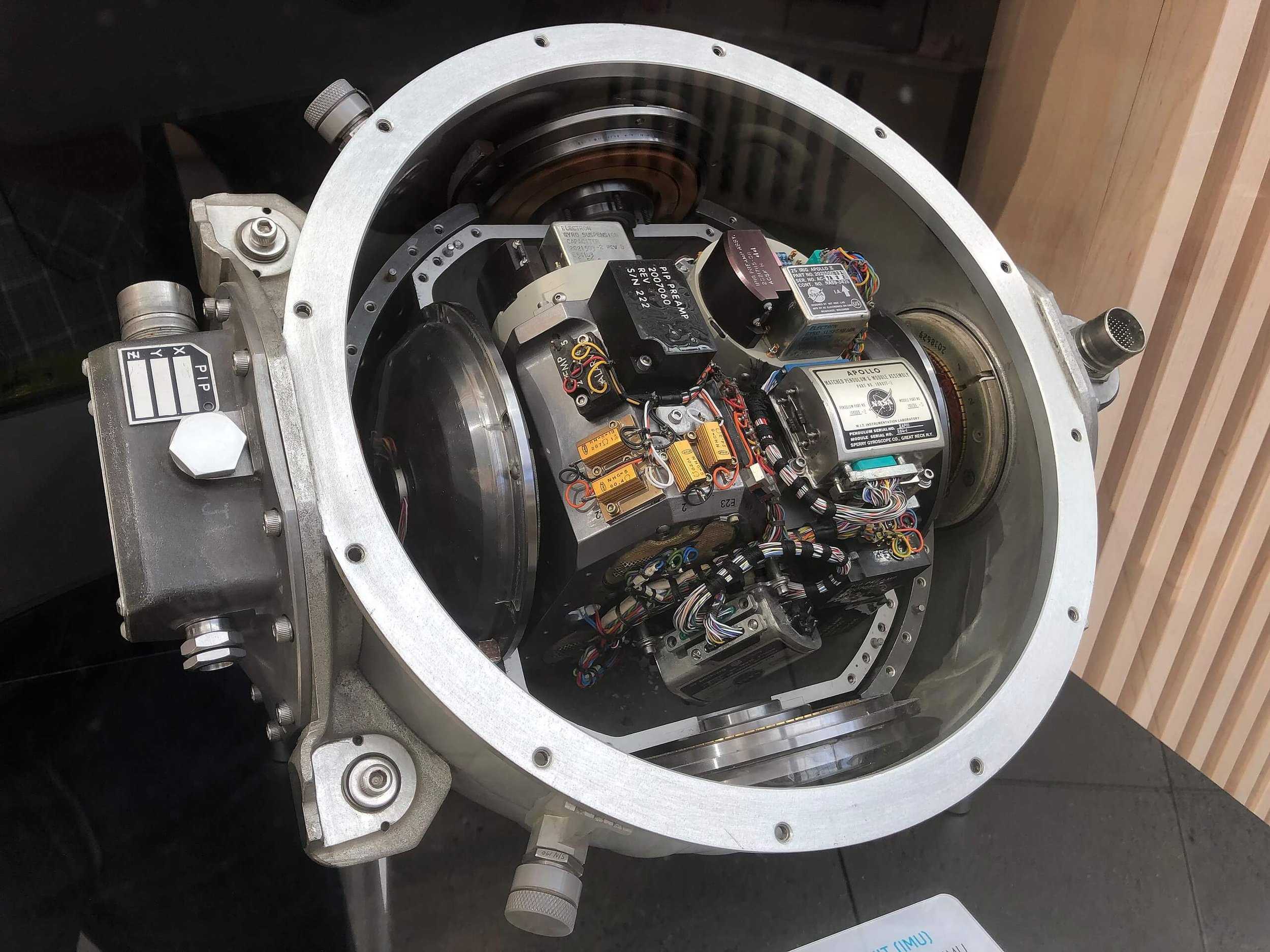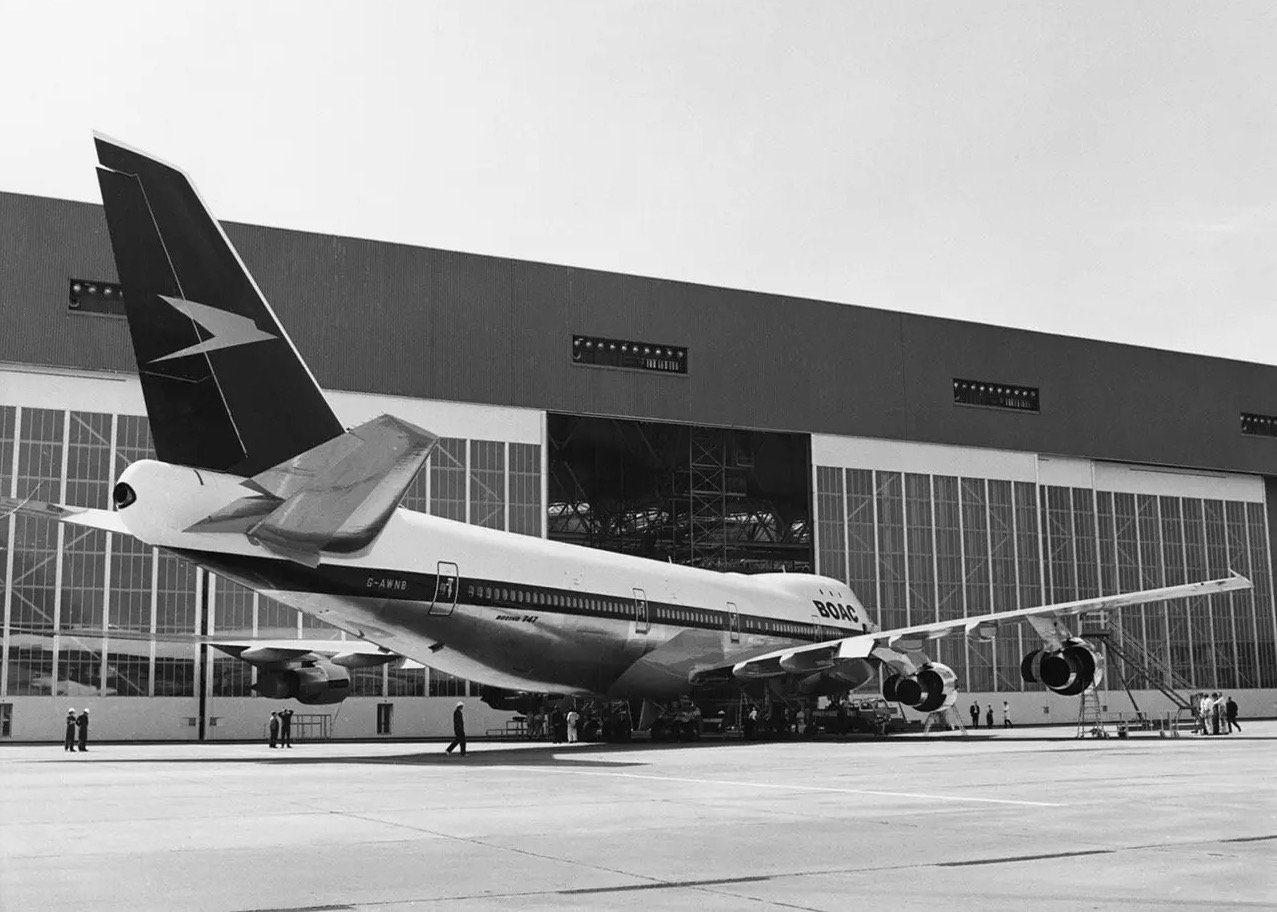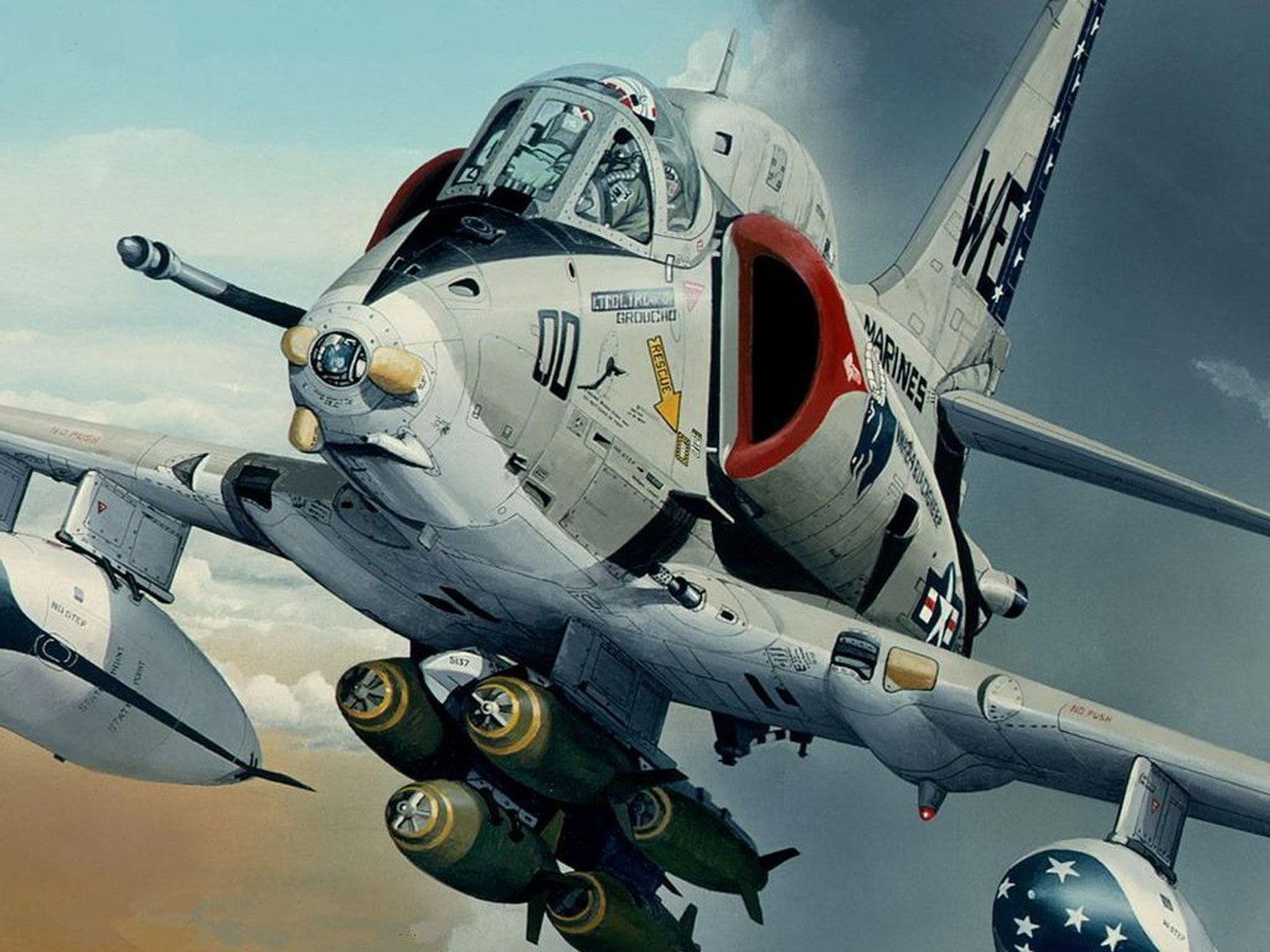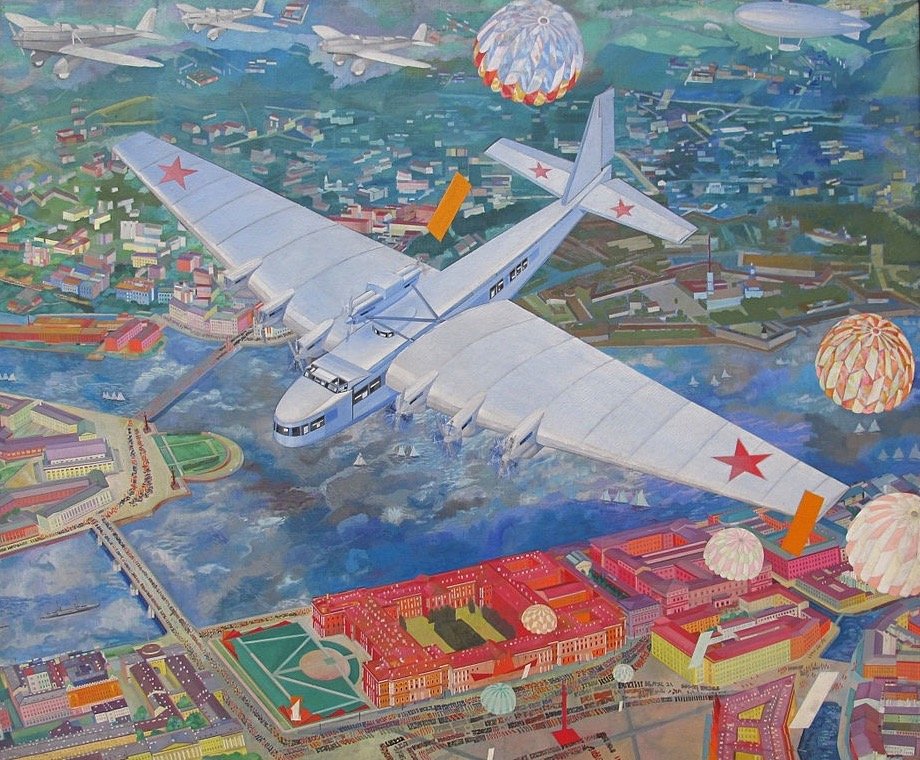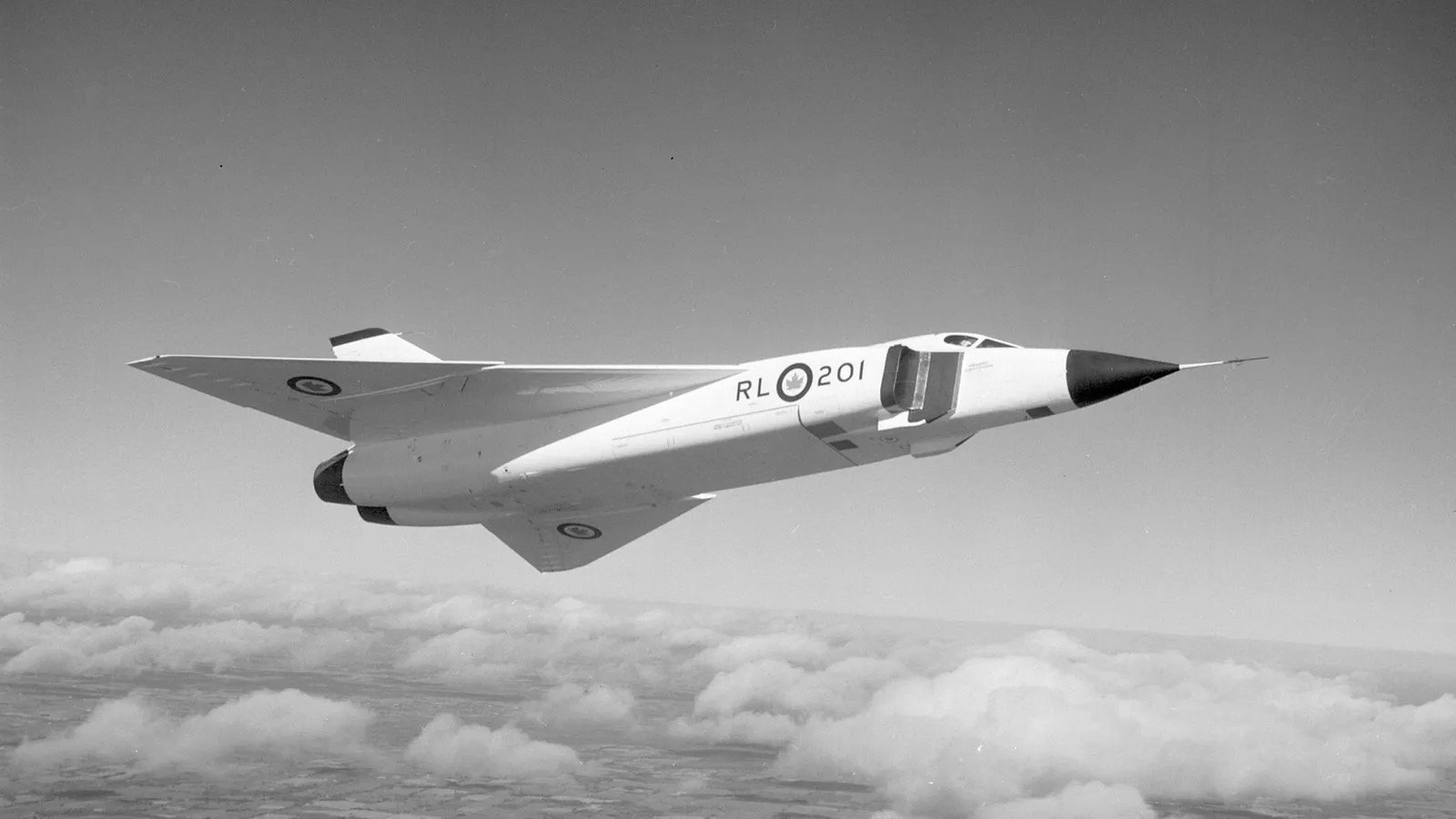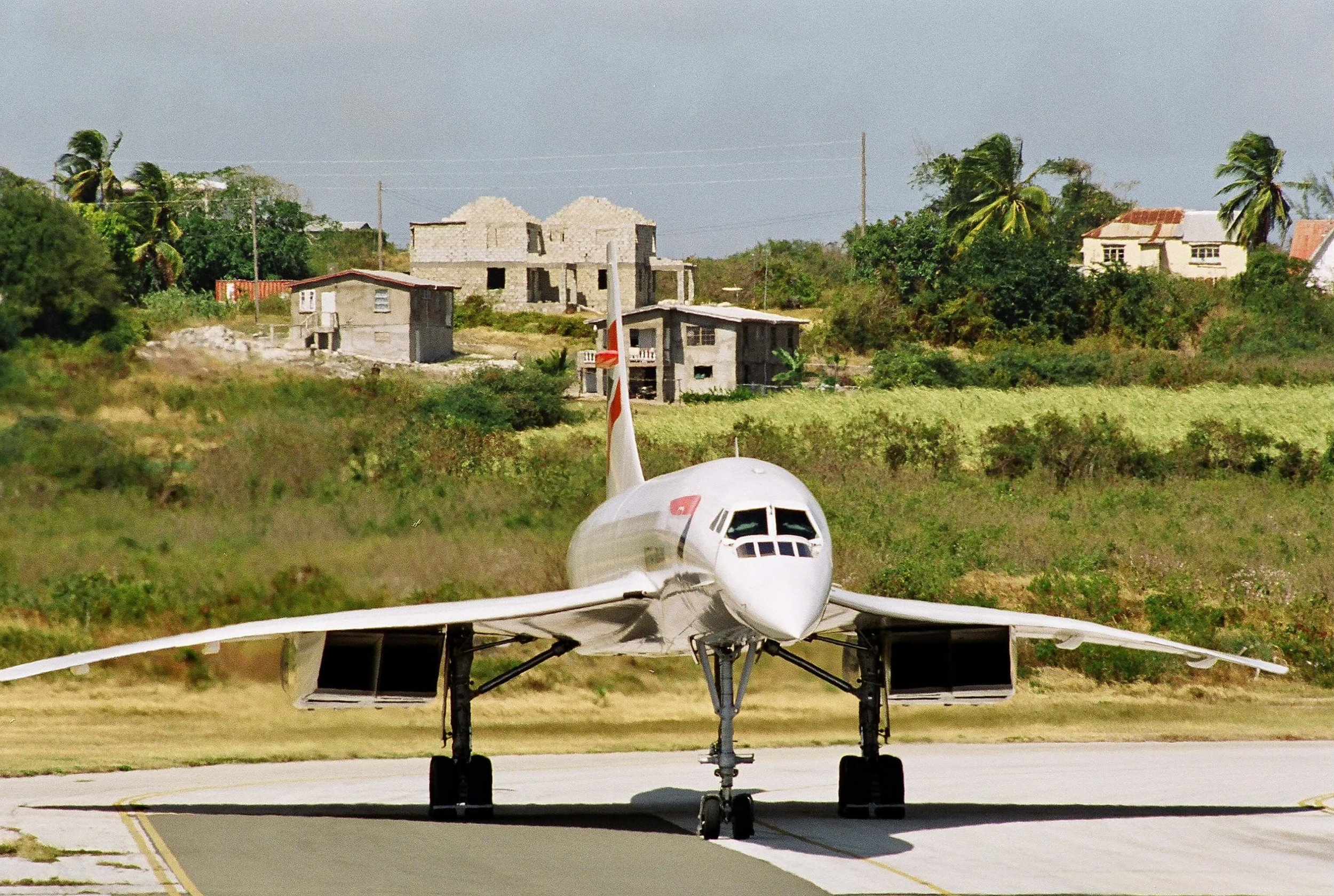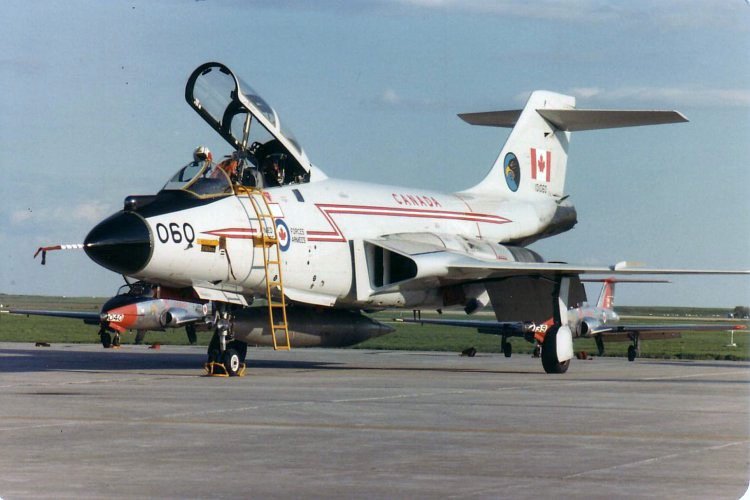An Outsider’s Look at Fly-by-Wire
“Disgruntled relatives charge Air France and Airbus with ‘involuntary manslaughter’ for the 2009 total loss of AF447 which lost its correct airspeed information due to the wrong sort of ice. Accused plead not guilty.”
“ . . . clearly stated the importance of pilots having the skills to fly the plane when the automation fails. To paraphrase the document it concludes that manual flying skills are paramount for flight safety, that automation requires more training, not less, and that it is not a binary choice between manual and automated flight. Both are essential components with different but complementary skill sets needed.”
Introduction
The Concorde has been described as the first Fly-by-Wire airliner. This is partly true, but I have never been involved with today’s more comprehensive use of the concept, having finished an airline career with 12 years of Concorde flying. This essay raises the suggestion that the exponential spread of digital electronics is currently changing human thinking and behaviour to an unprecedented extent, including the art, craft, skill or job of aircraft piloting. Even though I have been recently reminded that the global hull loss rate has fallen dramatically since full-time automatic aids for airliner flying became mainstream, it is the new causes of major accidents to flyable transport aircraft that give rise to concern for the future. I have it on good authority that the industry now accepts that less pilot training and experience is an unavoidable part of the economies required for success in an Old v. New World battle of the manufacturers.
This post started as an old git’s armchair ramble through thoughts, prejudices and shop floor snap judgments, but do Airbus really deserve any flak? Careful thought has decided no. The digital revolution runs far wider than the air transport industry. Human life is seldom exactly the same twice; and which genes will survive is never certain. The vast number of sensible, sane and reliable aviation professionals and their employers who have successfully adapted to modern equipment need read no further. But what about the others. Should fly-by-wire products come with a ‘Use Responsibly’ label?
History
In 1984, as a British Airways employee helping out with a small airline, I made four base training flights with that company’s chief pilot in their B707, totalling five and a half hours. The purpose was his French licence upgrade to command status, on behalf of the French licensing authority. Air France no longer operated this type, so our first visiting AF training captain would sit behind me and observe. He briefed me privately on what he required to see from our candidate. One requirement was the approach and landing without indicated airspeed - as a surprise (surpreeze).
‘But we don’t do that’, I said. ‘But you should’ he replied. ‘In our aircraft training we do everything that’s in the manufacturer’s manual, and nothing that isn’t.’ Expensive, but useful I thought.
I was surprised to find that the no-airspeed approach and landing instructions were indeed in this company’s 707 manual. I’d flown this type since 1966, with an intervening 9 years of B747 and VC10. But never had this exercise been mentioned during our initial 707 training, or routine checks, or a return to this legendary aircraft. As an ersatz Air France training captain I was impressed by the comprehensive list of approach variations required of our candidate, many of which had long gone the way of ‘too difficult to do in a jet’ in our own standardised big airline. The no airspeed exercise is not as difficult as it may sound, for a pilot with some familiarity with the type. When a familiar pitch attitude and configuration is accompanied by the required vertical speed, it follows that the invisible airspeed must be correct, near enough. It works.
Another visit to our tropical island a few weeks later by the French main man confirmed this comprehensive French tradition, and three flights in two days completed the required syllabus. He also had sat behind and had told me what he wanted to see. The no airspeed flying was included, and the final session ended with a three engine approach and landing with original unboosted rudder control. Smiles and congratulations all round. My student now had a French captain’s qualification for the B707, and he had learned a lot.
So had I; mainly that all the manufacturer’s recommendations worked well when flown accurately, but this did assume an adequate level of basic piloting and awareness of three-axis flight - what your flying controls will actually do for you.
In the 1960s I’d come across an Air France 707 training book, and marvelled at the variety of visual approach techniques described and drawn. Then, Air France continued to visit their colonial destinations, many of them still relatively remote and sparsely equipped. Their initial accident rate with the new B707 had not been good. Faster and more unwieldy than a DC4, it was clear that a more formal and structured approach was needed for successful arrivals at dark and hilly places, hence the training book of techniques where a straight in ILS was not possible. It has since occurred to me that my two back seat French examiners had coached me (and the candidate) through this book.
That was then, and although the majority of today’s airliners look remarkably similar to this seventy year old Boeing bomber/tanker/airliner project, what’s inside them is very different.
Back to the future
A year or so after the 2009 worst disaster in the history of Air France I went to a lecture in Toulouse about flight safety. The non-aligned British speaker told us that Air France had been shocked to the core by this accident. ‘How could this have happened to us?’
I was reminded of the thunderstorm principles of the old days. ‘If things appear unmanageable, leave the engines at the relevant thrust, maintain the straight and level attitude as best you can and ignore altitude and airspeed until normal service can be resumed. Do not try to fly with the stabiliser trim.’
What had happened to this Power, Attitude, Trim, basic instrument flying priority? Had ‘hold the attitude, don’t chase the speed’ become a new heresy? Unfortunately, in this case, the pilot disconnected the autopilot and the airspeed disagreement changed the flight control law to a simpler order of algorithmics, presenting the hapless pilots with a greater box of digital surprises than anticipated by the Air France training of earlier days. Of course this Airbus surprise was not supposed to happen. Easy to say, but surprises do occur, even today.
Some opinion now considers the tsunami of warnings precipitated by a surprise failure an unhelpful distraction for a modern procedure-dependent crew, making traditional analysis and action difficult. Our lecturer told us about radical new Air France ideas for a training policy change which might somehow restore an element of old-fashioned priorities for pilots, and break the passive tech-dependency that appeared to be replacing this tradition. Why not follow the example of a small child given a new electronic device. The first learning instinct is experimental, not academic. The child presses any and all buttons, lights, switches etc to see what happens. Like the many tea-party chimps and their typewriters a great work of scholarship could result, given infinite time. So why not make lesson one for the professional an education-free playtime session of discovery in the simulator: it might work . . . .
Something must have changed
This major accident, attributable to the treachery of Earth’s atmosphere, suggests that something fundamental had changed during the last two decades of the 20th century. One possible answer is simple: technological advances and increased reliance on automated piloting had erected psychological fences around the airline pilot, separating him from the real world that he is best suited to deal with. Like human nature itself, the results have been both good and bad, and ‘use it or lose it’ applies to the human thinking process as well as physical prowess.
My first glimpse of this future had come in 1971 with an introduction to the B747. A double sized 707 it looked, but the most significant, life-changing novelty was the off-the-shelf inertial navigation device. This was the art of navigation in a self-sufficient box; no looking outside - one ancient human craft instantly cancelled. We have the Kennedy moon challenge and the Apollo programme to thank for this, and the accuracy, reliability and simplicity for the user was incredible. It consigned our WW2 navigation technology and craft to the landfill site.
Where did the impetus for labour-saving technology for transport aircraft come from?
Curiously, the civil transport business is the last place to look. The motivation came from a continuing arms race, to include the race for space domination.
In affairs of expenditure and sophisticated technology, national security naturally takes precedence over civil air transport. In 1988 I saw an F18 Hornet demonstrated by a Canadian pilot at a minor airshow in Alberta. This aircraft did not rush past to show how fast it would go, but flew some strong if relatively simple aerobatic manoeuvres which demonstrated its impressive cornering ability at moderate speed. Also included was a kind of flat spin behaviour provided by max incidence, low airspeed, rotation by rudder and/or asymmetric thrust. How could the pilot perform these manoeuvres with such confidence without the safety net of many thousands of feet of air below. It was obvious to me that something clever was sharing the flying. More thrust than weight helps the upward part of a square loop but a bone-crunching corner number four at circuit height could not rely on human judgment alone. This is fly-by-wire assistance for fighters, as demonstrated by Maverick and his ‘hit the brakes’ dogfight surprise.
The crew workload for a combat aircraft can be extremely high - at the limit of human capacity. Equipment suitable for intentionally critical situations has developed using all the technological advances that could be mustered in little more than a century of aviation. Such a dramatic advance is technical evolution on steroids - in considerable contrast to the capacities of we humans who may partly share the experience. Years ago I’d heard the term Stick Steering* as a project for Douglas commercial aircraft. I knew it meant instructing the autopilot via the normal control column instead of knobs and buttons elsewhere, so looked Douglas up. Wikipedia showed me the A4 (Skyhawk), a small but popular attack aircraft, first flown in 1954 and updated in 1962. This E model offers its pilot a considerable choice of weaponry to release at the touch of the same button; not all of it at once, says the manual, but chosen on a comprehensive box of knobs. Shall it be one rocket, or several? A burst of gunfire perhaps, or all the bombs at once? The choice is yours, and probably decided while refining the accuracy of a precision descent at high airspeed while visually assessing a target. What a lot to do, with only two hands. But there’s more to help the driving task.
A4-E manual (1962): Autopilot Modes: CONTROL STICK STEERING (CSS) says: ‘The CSS mode provides for longitudinal and lateral control of the aircraft through the AFCS* by pilot movement of the stick in normal (autopilot) flight.’ There are limits, of course, quite sporty in this case, and if you exceed them, or strong-arm the stick, you take over, but this is real fly-by-wire - something the Concorde did actually have, but only wired up for a special emergency, never used*. In the single seat, high workload environment, I can see the advantage of AFCS as a piloting assistant which instantly obeys your intuitive fine adjustments to automated flight as your finger waits on the trigger.
Despite this technical wizardry, man’s remarkable ability to deal with complex and unfamiliar environments is not new. It would appear that our basic cerebral hardware, with its impressive but under-employed spare learning capacity, is little changed since well before the stone age. I’ve experienced it in action. The food- or addiction-driven stealth, the ambush, the stone weapon, the incapacitation of the victim. Whether to eat it or steal its mobile phone - or both - is a mere chance of history; but man, this inventive creature, remains much the the same. Can it survive its replacement by artificial intelligence? More to the point, does its human’s real-life intelligence, imagination and instinctive lateral thinking deserve more recognition and respect from the corporate world?
When did the wire come into it?
Early aircraft had plenty of wires directing their flying controls, but these were not the electrical kind as featured in the Tupolev ANT-20 of 1930, or the Concorde of more recent history. Both are mentioned in an informative Wikipedia page under the Fly-by-wire title. Here’s what the History paragraph says:
“Servo-electrically operated control surfaces were first tested in the 1930s on the Soviet Tupolev ANT-20. Long runs of mechanical and hydraulic connections were replaced with wires and electric servos.’ . . . . ‘The first non-experimental aircraft that was designed and flown in 1958 with a fly-by-wire flight control system was the Avro Canada CF-105 Arrow, a feat not repeated with a production aircraft . . until Concorde in 1969, which became the first fly-by-wire airliner.”
This 1930 6- or 8-engined Tupolev monoplane named Maxim Gorki was built as a Soviet propaganda crowd-pleaser. It had plenty of electrical generating capacity. Underneath, large speakers blared out the heart-warming encouragements of Uncle Joe, recorded earlier; or perhaps live via radio link with the Kremlin. A gaggle of small aircraft frolicked around it, to emphasise its size - until one of them hit it in 1935 at the Moscow airshow, causing a disaster. The patriotic painting shows the Maxim G. over downtown Leningrad on a parade day, in some detail, although the parachuting objects are not clear. The second example became an Aeroflot transport.
In 1942 that one left Chardzhou in Turkmenistan for Tashkent International (Uzbekistan). With 50 kms to go it was seen to descend to about 500m, then enter a steep dive, hitting the ground almost vertically. It appears that the captain was currently not at the controls, and whoever was had struggled to manage the labour-saving autopilot, inadvertently asking it to descend to the selected 0 metres height - which it duly did. This does sound like the first fly-by-wire crew confusion disaster - well ahead of its time - though who was pressing the buttons is not clear.
Electrical signalling, the original fly-by-wire.
ANT-20, Avro Arrow and Concorde are examples of ‘electrical signalling’, and the same synchro-selsyn idea had been used to automatically coordinate float level and sluice gate positions in the Panama canal locks. This project was initially French designed and built, finished by Americans. This electro-magnetic copycat principle was well understood in the nineteenth century.
Electrically signalled flying controls.
Common features of CF-105 Avro Arrow and Concorde
Both were highly swept deltas, intended for well-supersonic flight with enough wing volume to carry useful fuel. Both had the precise electrical signalling system, indicated above, to achieve the control requirements for an aircraft of large speed and skin temperature range, accomplished by powerful and authoritative elevon devices situated at the far end of a long fuselage. To ‘enhance’ the variety of natural stability and control behaviours of this design, both had auto-stabilisation assistance which shared the flying controls. This auto-stabilisation principle countered the undesirably rapid or sometimes wayward attitude changes achievable by routine piloting technique, but did not manage the flight. If the powerful controls were handled carefully enough, auto-stabilisation action was hardly noticed, and the pilot remained in charge of an agreeable and straightforward aircraft, notwithstanding the outstanding performance and energy management required.
Both designs were enthusiastically supported by their flight test departments: Jan Zurakowski and his fellow Polish WW2 veteran Wladvslaw Potoscki were delighted with the Arrow. Five examples had been built and much achieved when the axe fell. The Canadian government cancelled the project with no warning. Too expensive, a step too far? . . There are many suggestions, and the demand that all existing aircraft, drawings, construction jigs and so on be totally destroyed suggests commercial politics as well as prudent housekeeping. So, instead of pursuing its own means of challenging the feared nuclear attack by long range bombers, Canada obtained 60+ F-101 Voodoos from the US government.
Not many people know this, but my second CAA operations inspector for the Concorde had been a RCAF exchange Voodoo squadron commander. And an English aerodynamicist who had spent some time working on the Arrow became an important French-thinking Concorde aerodynamics man in Toulouse.
The electrically signalled Avro (Canada) Arrow project was short-lived, but the similar Concorde provided its traditional crews with a quarter century of agreeable transport. Both aerodynamic and system design demands for such a radical concept were monumental, yet success was achieved by a huge amount of dedicated work in the 1960s, much of which found its way into a computerised Airbus Industrie. The result has been ground-breaking - in several senses.
Was the Concorde different from today’s fly-by-wire reality?
It certainly was - now old-fashioned in its human interface and crew functions. Think formula one car arranged to be agreeably drivable in London traffic. Concorde developers considered and planned for many of today’s helpful ideas, but 1970 was too early for selling them to the world at large, especially as part of such a radical aircraft that they would have suited. It’s a family saloon that will do 300 miles per hour? Top Gear at a pinch perhaps, but not for the world’s typical driver if we include all those coloured lights and buttons on the steering wheel.
The technical demands of creating such a radical transport project which masqueraded as a conventional airliner were quite enormous, considering the novel physics to be mastered in many interrelated areas. To equip a public transport aircraft with the mid-sixties real fly-by-wire technology, required in high performance military circles, had to be balanced with what could be sold to the world’s airlines of the day. The not-so-novel electrically signalled control surfaces were accompanied by the auto-stabilising help which succeeded in coordinating an unconventional aircraft with its conventional transport crew and passenger ride expectation, but pilot and autopilot retained nominal authority via cockpit stick and rudder. Behind the scenes were some important flight behaviour functions familiar to today’s AFCS* (Automatic [or Airbus] Flight Control System) crews, but the Concorde for sale was not a fly-by-wire product.
The Concorde was not glass cockpit. Personal acquaintance with its pilot’s horizon and compass instruments in 1984 strongly reminded me of our 1970 B747’s Attitude Director Indicator and Horizontal Situation Indicator, officially referred to as ADI and HSI for those whose cultures preferred acronym-speak. The Concorde’s were larger, with more sources of information; altogether a product step up from the utility market. But, nice to look at as these were, they were bulky, heavy, and contained much intricate miniature Meccano than the digital glass equivalents already popular elsewhere.
In the early seventies I went to Filton for a day’s come and see us visit. We saw pieces of Concorde being made - metal sculpting instead of sheet alloy - and were shown a throttle amplifier - to make the point of electronic engine control instead of rods, cables, bellcranks, pulleys and sprockets. It looked like the familiar book-shaped electric box with the two little handles on the front and plug sockets on the back.
But was the same job already being done by the tiniest digital chip in the Airbus A300? What about fully computerised management of the Concorde’s elevons? It certainly had been discussed, but was not mentioned to us. The English Channel divided the specialisations: Bristol - engines, intakes and fuel system: Toulouse - aerodynamics, flight controls, hydraulics . . .
Operating a live Concorde
Three old-style cockpit crew members continued the hands-on tradition, especially the flight engineer who managed a large, relatively unconventional panel packed with stuff the two pilots could not possibly monitor. Reliable interdependence between the three was essential because their workload could be high if something untoward happened. In this rare situation the list of memory items might have to be carried out immediately. Sometimes the nature of the flight had to simultaneously change to a less critical subsonic environment, to avoid exposure to the aerodynamic challenges of transonic deceleration without any system redundancy - thus reducing the risk that might be raised by fate’s next roll of the dice.
Critical systems required for managing supersonic flight physics were analogically controlled and duplicated, the in-use channel backed up by its identical twin - always shadowing, waiting to take over if required. As well as electrically signalled flying controls with autostabilisation, other examples include peripheral powerplant gadgets like air intake ramps and spill doors, engine primary and secondary nozzles and reheat (afterburner) control. Crew connection with an engine was electrical only, via one of its two throttle amplifiers. A pragmatic advantage over what was to come was the absence of an intrusive flight management system. Like the primary flying controls, engine thrust always answered its cockpit control. No mode confusion there, and the permanent sense of who and what was in charge continued a reassuring tradition.
Closely involved as they were, a Concorde crew retained a good idea of what was going on with their rather special aeroplane, and the sometimes critical tactical decisions that arose. 25 years of disaster-free British Concorde flying says that this balance of novel technology with the necessary crew actually worked. Despite this cautious person’s instinctive wariness of high-performance flight, the Concorde’s sense of personal challenge, its perceived politically incorrect, but mythical elitism, and a stunning ticket price, I came to quite like it. Money for jam with fun flying included? Not exactly, but the collective BA Concorde establishment got away with it. This wasn’t just luck.
Today, suitably able autonomous systems would be able to replace the Concorde flight engineer’s panel, but the third pair of safety-conscious eyes would be missed, as would sage advice based on real life experience. Humans are good at this, but we have to acknowledge that their mental versatility can be problematic. This is why the coordination of man, machine, technological assistance and reliable procedure must remain in balance for consistently safe flight.
AIRBUS - changing airliner tradition
As prospects for an improved Concorde Mk.2 evaporated, and relatively cheap mass air travel became the egalitarian view of an utopian future, many of those who had collaborated to create this historic project became part of the European consortium that has become the mighty Airbus Industrie. History shows that over-conservative aircraft constructors can find themselves at a commercial disadvantage in their attitude to innovation, but this fresh start with a choice of multi-national talent and much experience had no such problem.
In round figures Airbus emerged 50 years ago with its A300, and only the most curmudgeonly reader could claim that the Airbus airliner project has not been a resounding success. First operated by Air France in 1988 the A320 example decided the comprehensive fly-by-wire/sidestick* policy for future Airbus models. Wikipedia tells me that ten thousand A320s are currently at work worldwide. American Airlines have 459 of them - the largest operator of this challenge to Boeing and the 737.
A busy A 320
It is common knowledge that this modern technology for air transport has reduced its passenger death rate by a considerable degree. It is also accepted that the resulting, cost-competitive airline business environment cannot afford to pay for the pilot training and experience qualities of the past. The policy appears to work, but it’s the nature of today’s serious accidents - frequently not attributable to unmanageable system failures - that should raise concern for the future. The minds and skills in some in the world’s cockpits appear to have changed. Will their numbers increase?
Does the digital revolution affect human behaviour and personality?
Of course it does. The last thirty years demonstrate the interesting times that the Chinese proverb wishes upon an enemy. It means an era of unmanageable change, and today an immediately-available global means of ethics-free communication is having a corrosive and stultifying effect on the minds of those many who have least protection from it. The widespread evidence has become part of daily life, and readily accepted as normal. We are sleep-walking into the reality of a new, submissive and not too well-informed 1984.
What is the answer to the title question? Are airliner crews now becoming more automation-dependent, as a matter of employer policy, than is good for their passengers?
I have no answer to this; in fact the evolution of air transport must run its course, as evolution always does. The prospect is not all sweetness and light: there will be disappointments, with the occasional glimmer of improvement, possibly destined to fizzle out before the next bright idea offers hope.
Currently, the airliner community has three piloting concerns to consider:
Pilot difficulty in recognising and managing an unusual but manageable problem.
Murder-suicide (currently reputed to be equal top cause of passenger death).
Total automation: virtual pilot elsewhere, freed from the risks of flight. One can debate this question, but how it might affect business interests has become more important than virtual safety. The no real pilot option is attractive to those many who think pilots actually contribute very little. Only the able and experienced know that apparent idleness in flight can be a good sign.
1a. late addition, Feb 18th 2023. Inadequate basic piloting skills, including manually-flown routine instrument procedures - as required for instrument rating qualification. The FAA now appear to acknowledge that manual handling practice for pilots can be a good thing. Is this a glimmer of hope that the common sense of human experience might be recognising the shortcomings permitted by unhelpful priorities - whether financial or social engineering.
Conclusion
This rambling discourse suggests that human versatility should not be sidelined for convenient but irrelevant reasons. A satisfactory middle way must be found which makes use of available technology, but retains suitable human involvement of adequate quality. And on the subject of ‘suitable’ a respected quality of captaining is becoming even more important in a reduced crew. Its value is not replaceable (yet). For humans to be flying in the air is much further removed from their evolutionary history than splashing about in the water. This deserves our continued thoughtful attention.
*AFCS, stick steering and the Concorde.
What did the FC part actually mean here? Was it flight control or flying controls? And what part was automatic?’ These starred topics anticipate a future blog which hints at how close the futuristic Concorde may have come to being the ideal full-on fly-by-wire example - though too early for its market. But would such a tactically critical machine then have survived the broader spectrum of the digital and compliant/dependent crewing it might have encouraged. We’ll never know.
